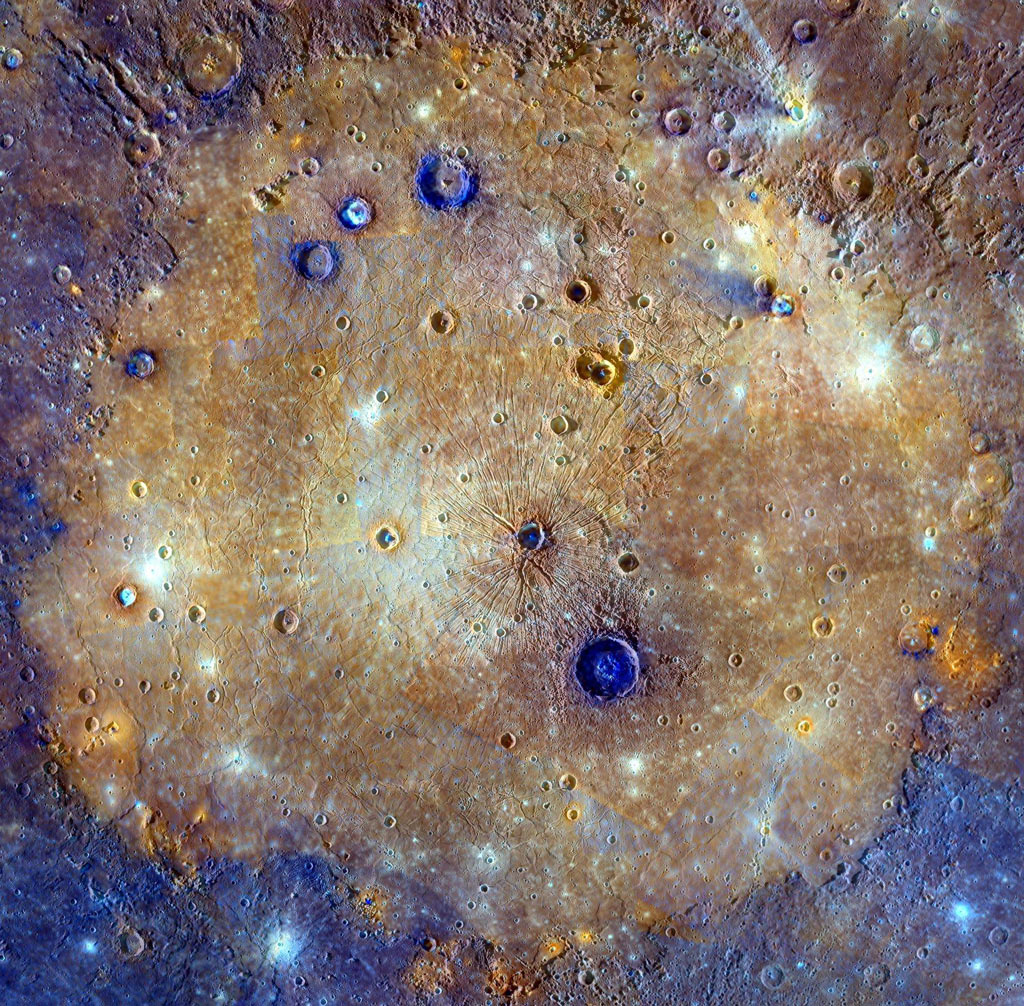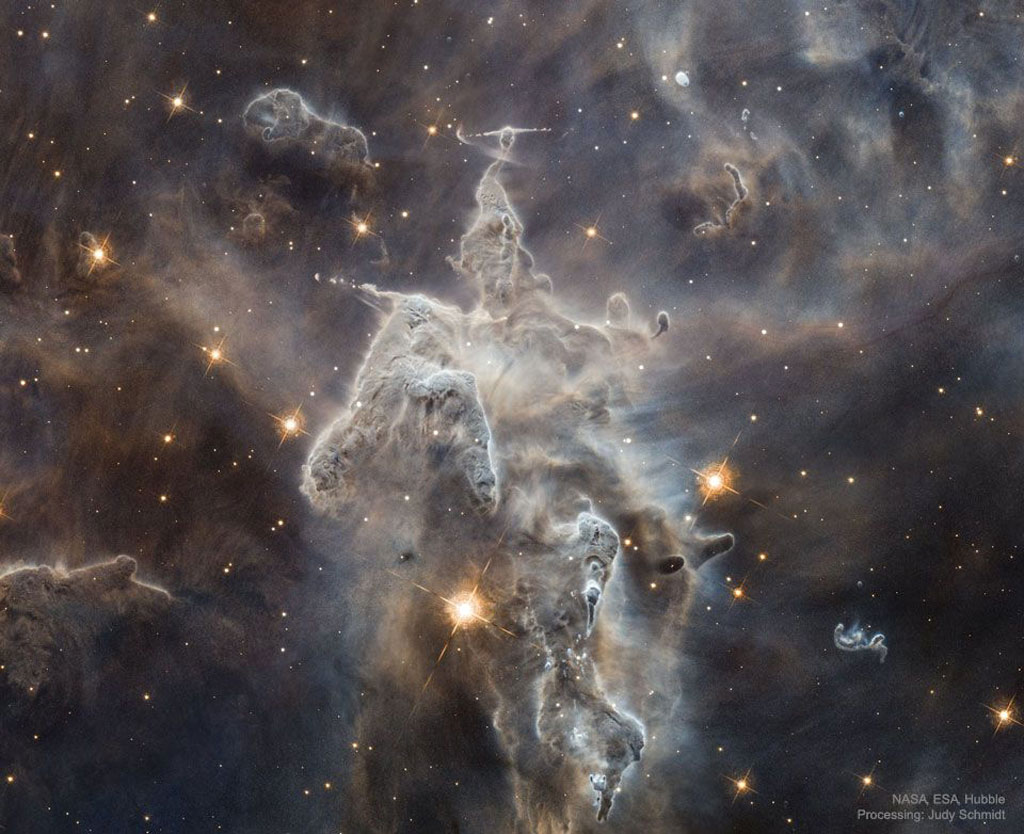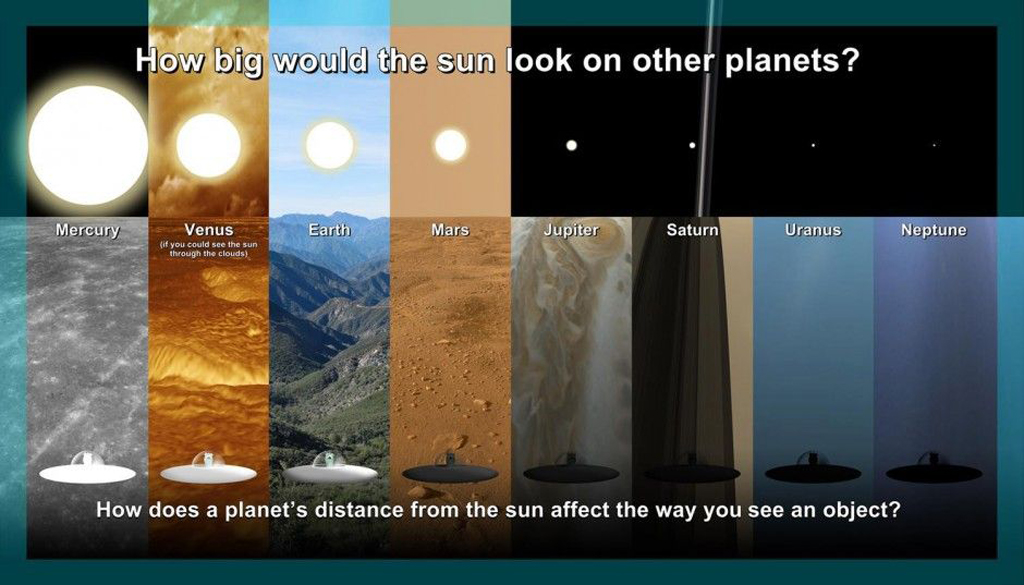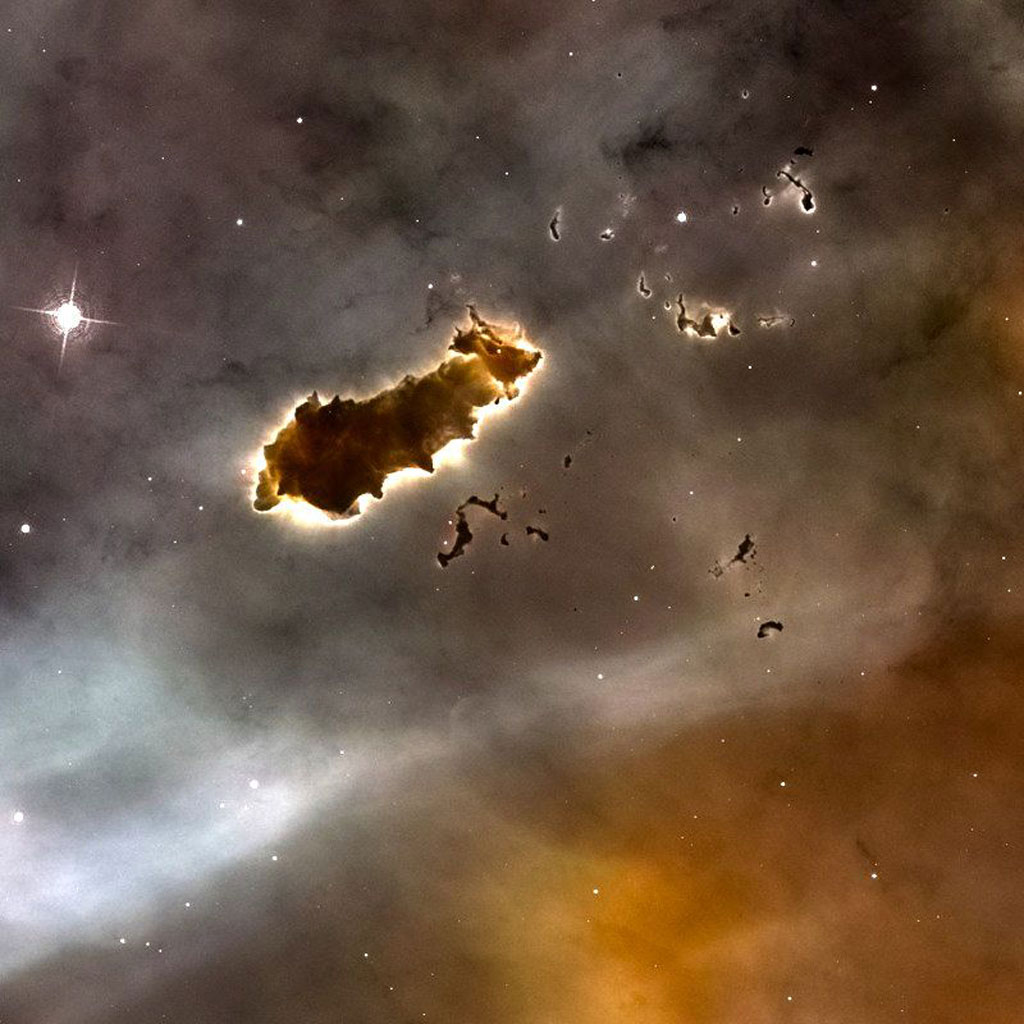
Planetary Picture of the Day
Week of February 13, 2023
Mercury, Saturn, and some amazing detail in the Carina Nebula.
Monday, February 13, 2023

Mercurial Surface
This mosaic of Caloris basin, Mercury, is an enhanced-color composite overlain on a monochrome mosaic. The color mosaic is made up of images obtained when both the spacecraft and the Sun were overhead, conditions best for discerning variations in brightness. The monochrome mosaic is made up of images obtained at off-vertical Sun angles (i.e., high incidence angles) and with visible shadows so as to reveal clearly the topographic form of geologic features.
The combination of the two datasets allows the correlation of geologic features with their color properties. In portions of the scene, color differences from image to image are apparent.
Caloris basin has been flooded by lava that appear orange in this mosaic. Post-flooding craters have excavated material from beneath the surface. The larger of these craters have exposed low-reflectance material (blue in this mosaic) from beneath the surface lavas, likely giving a glimpse of the original basin floor material.
Tuesday, February 14, 2023

Pillars in the Carina Nebula
Inside the head of this interstellar monster is a star that is slowly destroying it. The huge monster, actually an inanimate series of pillars of gas and dust, measures light years in length. The in-head star is not itself visible through the opaque interstellar dust but is bursting out partly by ejecting opposing beams of energetic particles called Herbig-Haro jets. Located about 7,500 light years away in the Carina Nebula and known informally as Mystic Mountain, the appearance of these pillars is dominated by dark dust even though they are composed mostly of clear hydrogen gas. The featured image was taken with the Hubble Space Telescope. All over these pillars, the energetic light and winds from massive newly formed stars are evaporating and dispersing the dusty stellar nurseries in which they formed. Within a few million years, the head of this giant, as well as most of its body, will have been completely evaporated by internal and surrounding stars.
Wednesday, February 15, 2023

Sun Size Comparison
Created by the now defunct My Science Academy, this infographic shows what the Sun would look like in the sky of the eight major planets of our solar system, assuming we could stand on the surface and/or see through the cloud cover. (Looking at you, Venus.) The alien in a spaceship provides a visual of what the light quality at the planet would be as well.
Thursday, February 16, 2023

So Far From Home
With this view, NASA's Cassini spacecraft captured one of its last looks at Saturn and the main rings from a distance. Images taken on Oct. 28, 2016 with the wide angle camera using red, green and blue spectral filters were combined to create this color view. This view looks toward the sunlit side of the rings from about 25 degrees above the ringplane.
The view was acquired at a distance of approximately 1.4 million kilometers from Saturn.
Friday, February 17, 2023

The Caterpillar in the Carina Nebula
Bok globules are isolated and relatively small dark nebulae, containing dense cosmic dust and gas from which star formation may take place. Those seen here are located deep inside the Carina Nebula, 7,500 light-years from Earth. The big one is almost 2 light years across. It contains molecular hydrogen, carbon oxides, helium, and around 1% (by mass) silicate dusts, and may go on to form a double or multiple-star system.





